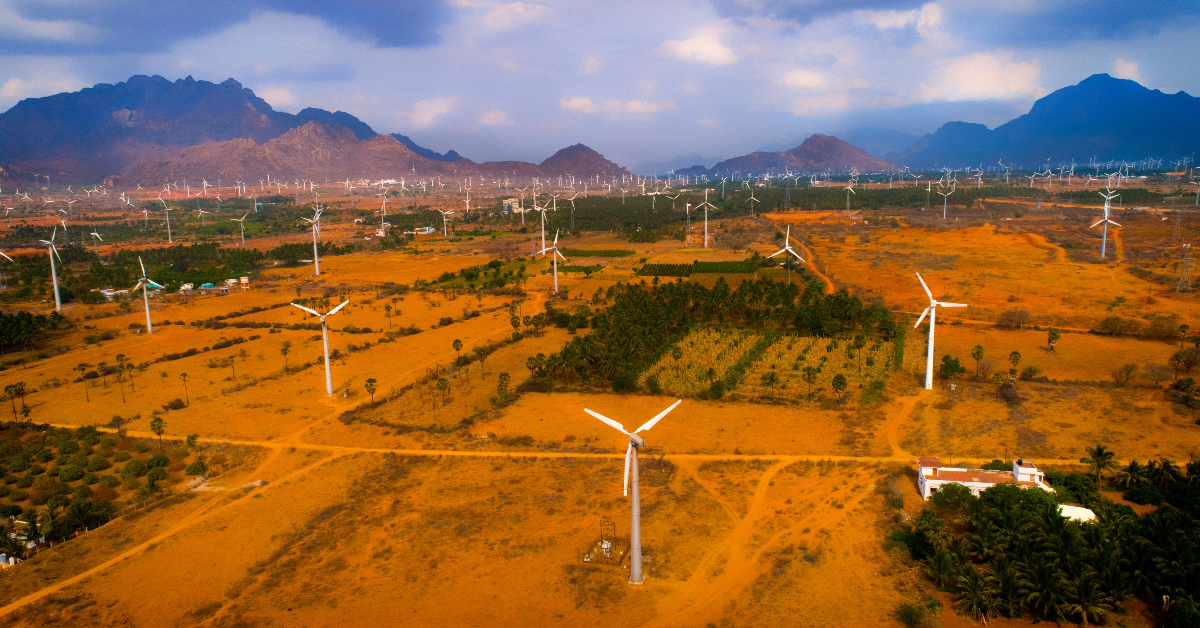Key Issues for Optimal Renewable Integration & How to Address Them
Achieving net zero emissions by 2050 will require a complete transformation of the global energy system. In the IEA's pathway to net-zero, almost 90%...
4 min read
 Team Energy Exemplar
:
May 13, 2024
Team Energy Exemplar
:
May 13, 2024

Renewable integration is a key initiative to ensure that decarbonization targets are met as we move into the future. Organizations all over the world utilize Energy Exemplar’s PLEXOS platform to ensure the grid of tomorrow can support renewable energy and storage technologies. A few leading energy organizations sat down with Energy Exemplar’s Dr. Christos Papadopoulos at our Xcelerate conference in Barcelona, Spain last year to discuss challenges they face related to renewable integration, and how PLEXOS helps solve for these challenges. In this blog, we dive into the key takeaways from this insightful discussion.
Dr. Christos Papadopoulos was joined onstage for this panel discussion by David Radu representing ENTSO-E, Ramiro Fernandez-Alonso Lopez representing Red Electrica, Chittesh Chandran representing Eirgrid, and Aurora Manicardi representing Terna.
The European Network of Transmission System Operators for Electricity (ENTSO-E) is the association for the cooperation of the European transmission system operators (TSOs). ENTSO-E has 40 member TSOs who represent 36 countries. The mission of ENTSO-E and its members is to create a system that is secure, sustainable and affordable while integrating the expected and required amount of renewable energy.
Red Electrica is the TSO for the Spanish electricity system – its mission is to guarantee the correct functioning of the electricity system while maintaining a commitment to sustainable development.
Owned by the Irish government, EirGrid plans, manages and develops Ireland’s electricity grid for a sustainable future. The organization is leading the transition to a low carbon future – ensuring the future grid is renewable ready. EirGrid is working towards 80% renewable generation by 2030.
Managing Italy’s high-voltage electricity grid, Terna S.p.A. is Europe’s largest independent electricity TSO. Terna is committed to creating a new development model based on renewable sources and the organization is the natural enabler of the energy transition through an ever-increasing integration of renewables into the grid.
For ENTSO-E, one of the biggest challenges is to understand the needs of an increasingly complex system. Due to the nature of the organization, ENTSO-E must coordinate the activities of all its 40 member TSOs. As renewable generation increase and the electric system continually interacts with other parts of the energy system, understanding future needs, and building and running a single model to represent that complexity presents an interesting challenge.
As we transition from the previous model of a high ratio of synchronous, thermal generation capacity towards a decarbonized system, we see a multitude of new elements emerging and being installed, including renewables, storage, and new carriers like hydrogen, amongst others. All these new technologies are connecting to different parts of the electric system, and while they offer the potential for increased flexibility, they also present a challenge. Integrating a large quantity of new technologies requires planning that integration in a secure way.
To ensure that the grid can handle this large quantity of renewables, the grid must adapt to changes in technology, evolving policies, and new infrastructure. To do so, TSOs need to have a projection of the future with respect to adopting and adapting to these changes. This becomes a very high-risk activity for TSOs. They must push to achieve set targets while also providing a multi-scenario projection which provides the confidence required for regulators and developers to invest in and build the technologies and infrastructure required to facilitate reaching these targets.
One of the main challenges Terna has found is that to successfully integrate renewable energy, there are a variety of elements that need to be co-optimized. The TSO must consider how renewables, storage, EVs, heat pumps, electrolyzers and more will contribute to an optimized system. It must be decided where these different elements will be located, how they’re going to be financed, and how they will interact. At the same time, congestion must also be considered to optimize all these different elements.
ENTSO-E, Red Electrica, EirGrid, and Terna all utilize Energy Exemplar’s PLEXOS platform to help address these challenges. PLEXOS is unique, because unlike other options, it is a fundamental market modeling and simulation solution that captures future behaviors rather than relying on historical data and performance to project future outcomes.
PLEXOS is also extremely flexible and customizable, which allows modelers and decision makers to perform a variety of scenario and sensitivity analyses. Lopez says that PLEXOS allows Red Electrica to prepare the scenarios, simulate them, identify system needs, and determine which development proposals will best help Red Electrica to meet climate objectives.
Manicardi emphasized the usefulness of PLEXOS to take all the different elements that must be considered and incorporate them into modeling to perform what-if analyses and build sensitivities.
For EirGrid, Chandran noted that PLEXOS is key for the TSO because it allows the organization to iteratively model different stages and scenarios – from installed renewable capacity requirements, to network upgrades, to potential issues in a constrained model, to assessing emissions. PLEXOS allows the team at EirGrid to assess the different levers and technologies that can be pulled and deployed to most optimally reach its 80% renewable energy target, while also giving the developers the confidence required to determine how to progress with their investments.
In the case of ENTSO-E, PLEXOS is a critical solution because it allows the organization to build and iterate an extremely complex model that is also co-optimized across the entire energy system – including the gas system. Radu mentioned that while previously relying on historical data and analysis worked pretty well, that's no longer the case. The fundamental modeling offered by PLEXOS is key to planning for the future, evaluating capacity factors, and understanding how technologies offer incremental improvements.
These key takeaways only scratch the surface of this fascinating panel discussion. To gain even more valuable insight from ENTSO-E, Red Electrica, EirGrid, and Terna SpA, check out the full video recording below!

Achieving net zero emissions by 2050 will require a complete transformation of the global energy system. In the IEA's pathway to net-zero, almost 90%...

Over the next two decades, India is expected to see the largest increase in energy demand of any country. To meet this growing demand, the government...

In some of our recent blogs, we discussed why there is a need for utilities and energy organizations to adopt a new planning methodology for...